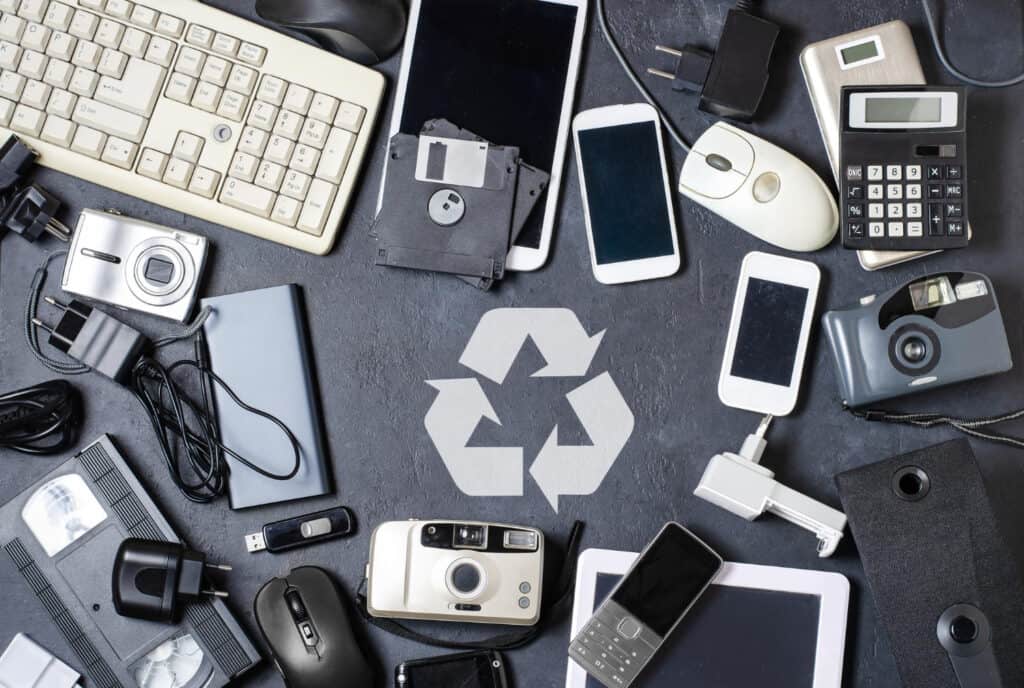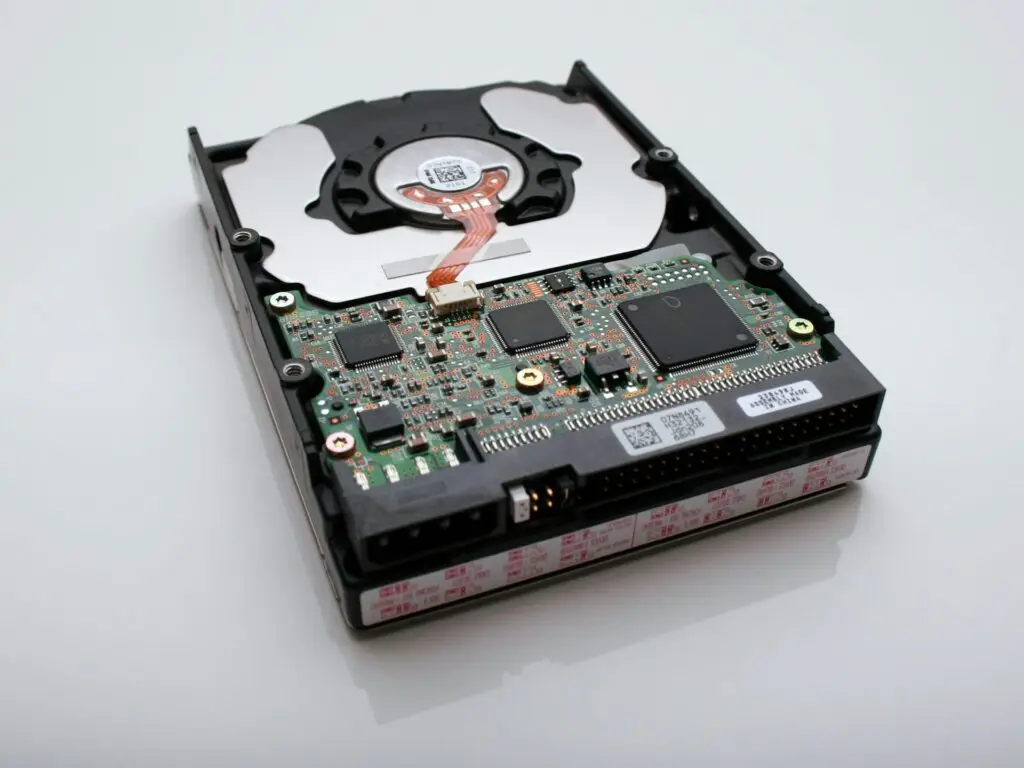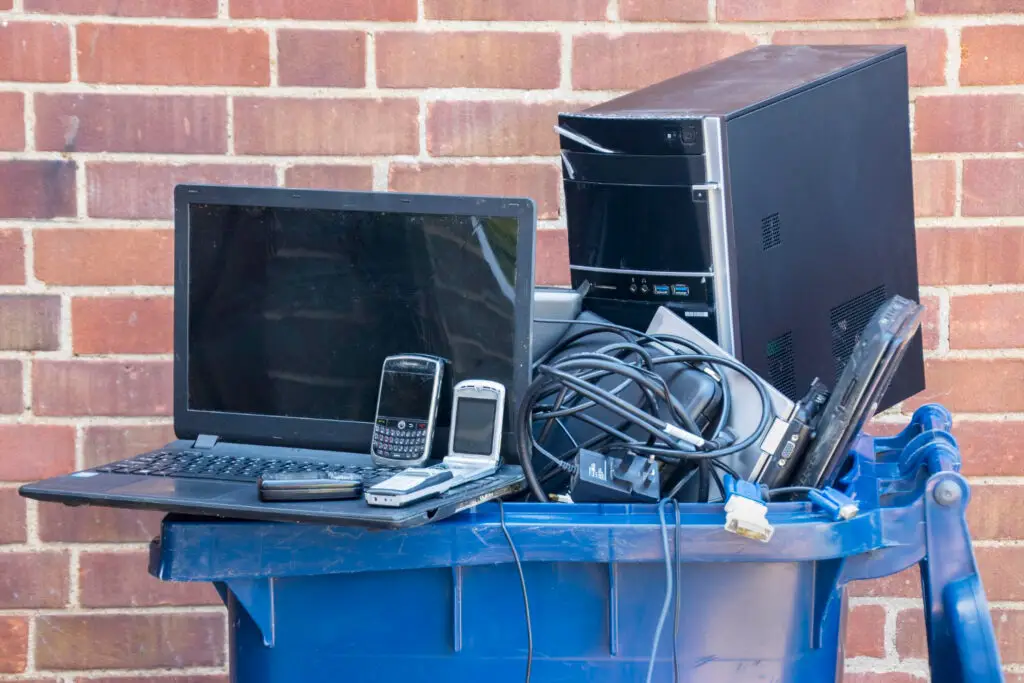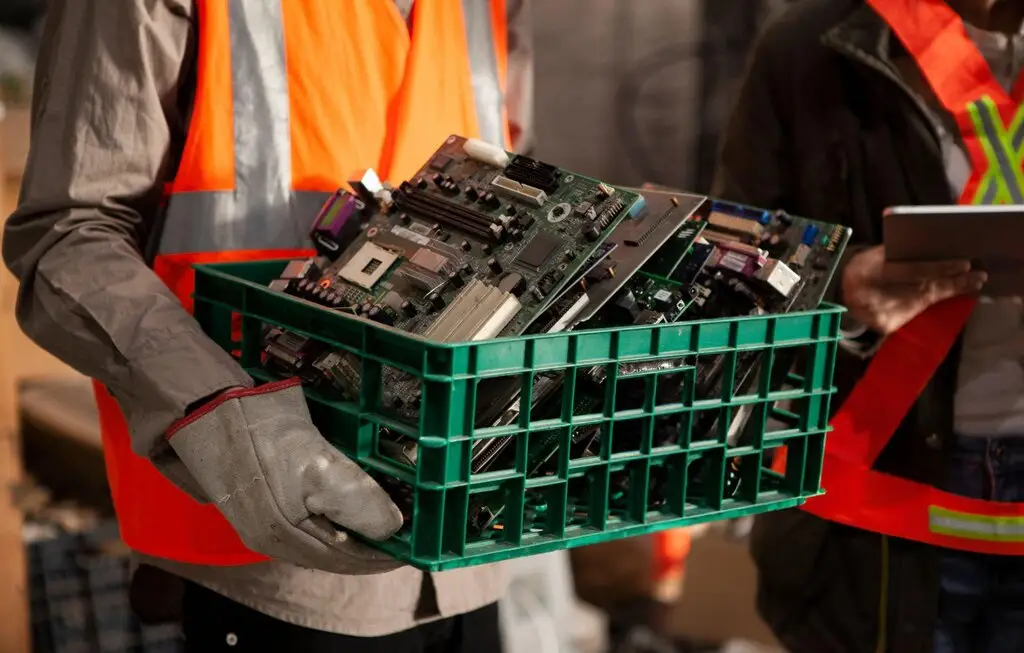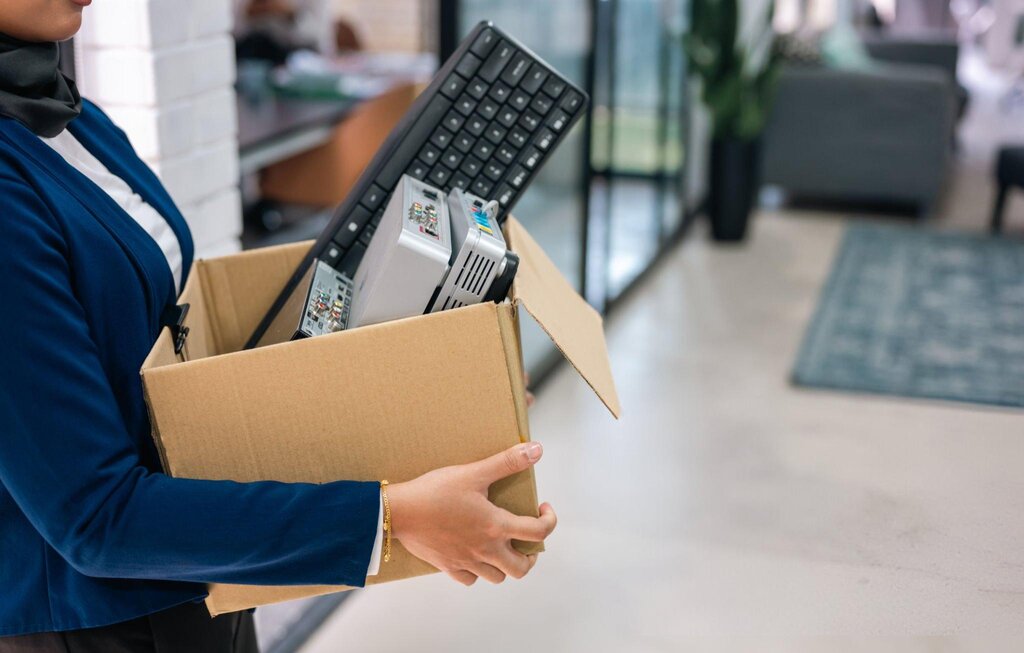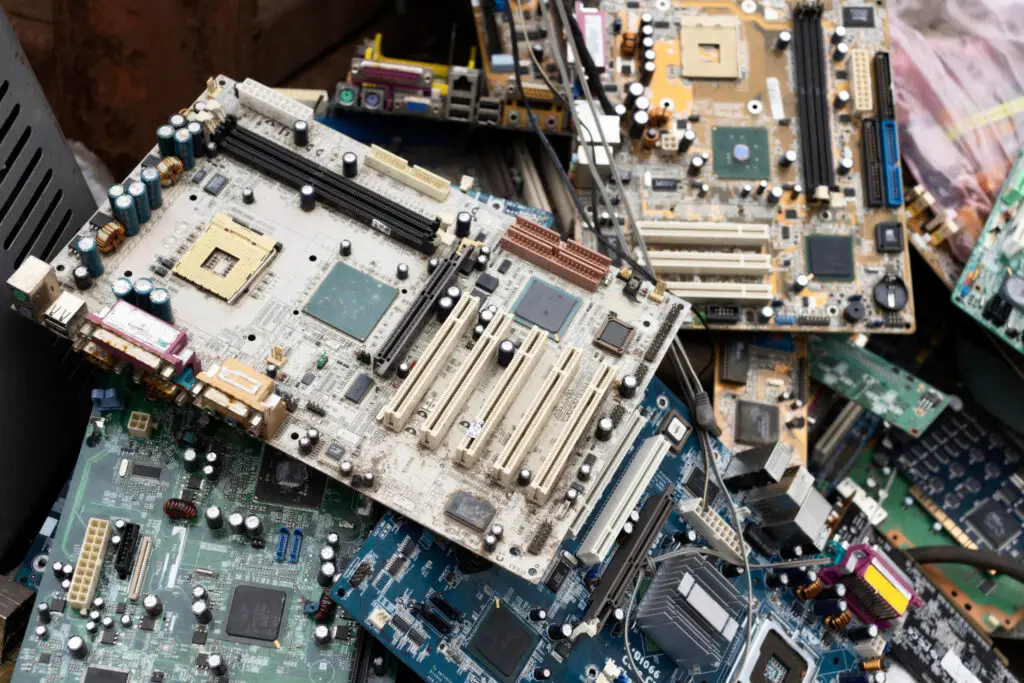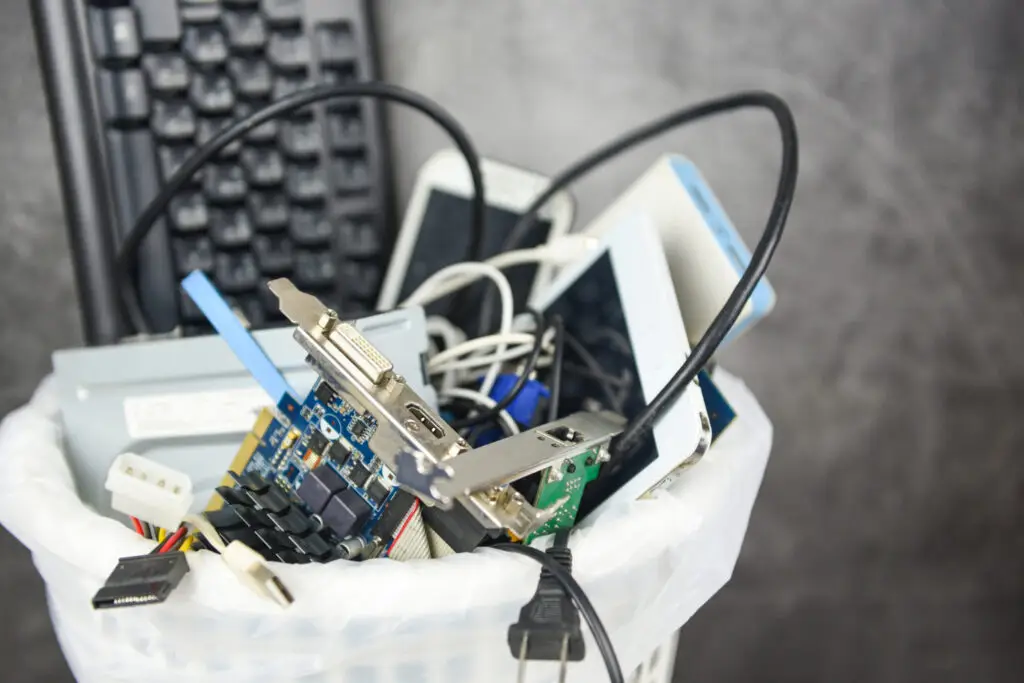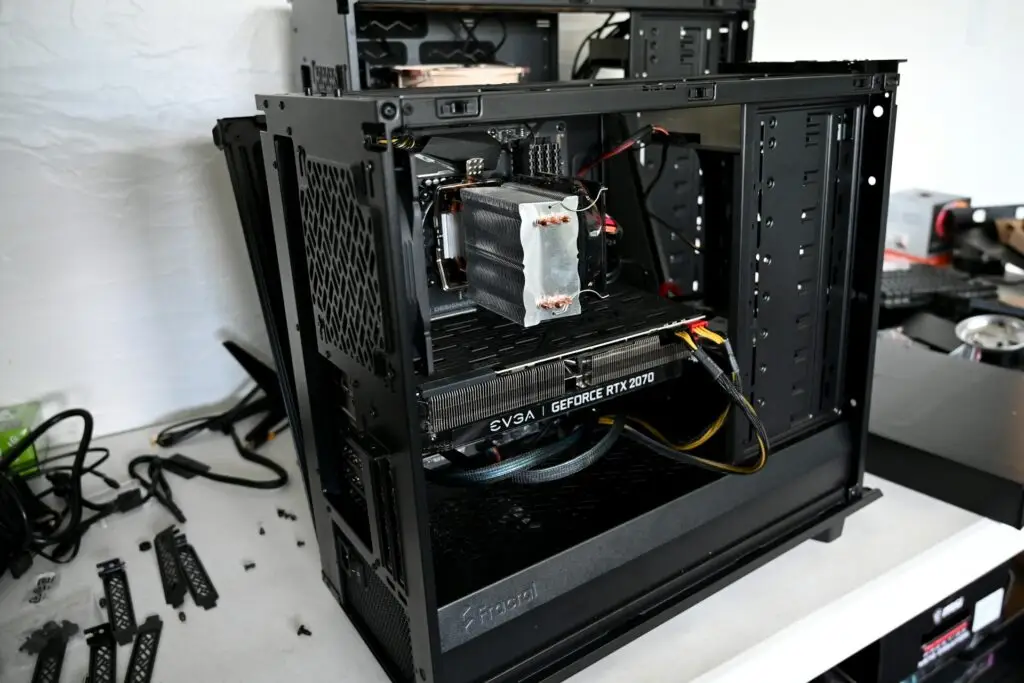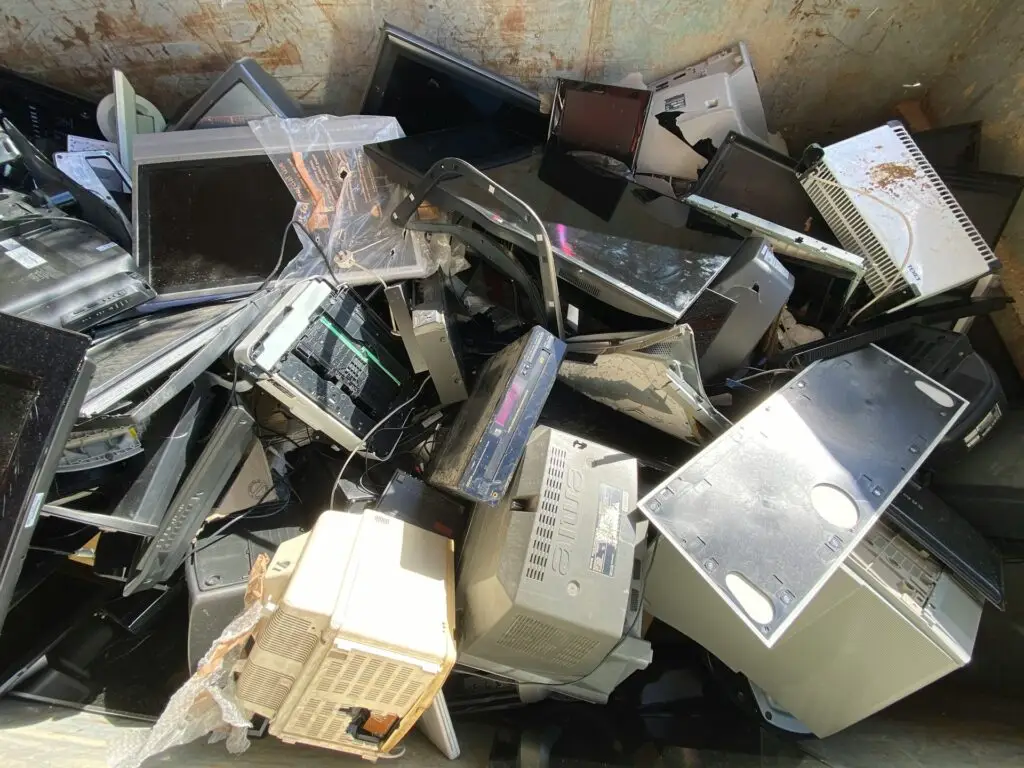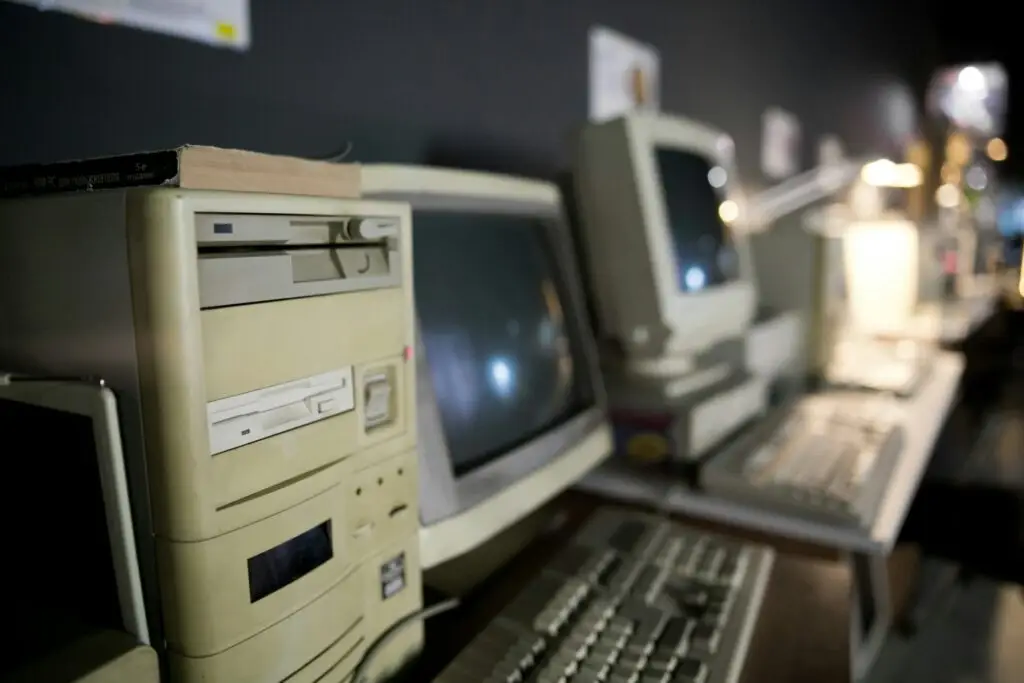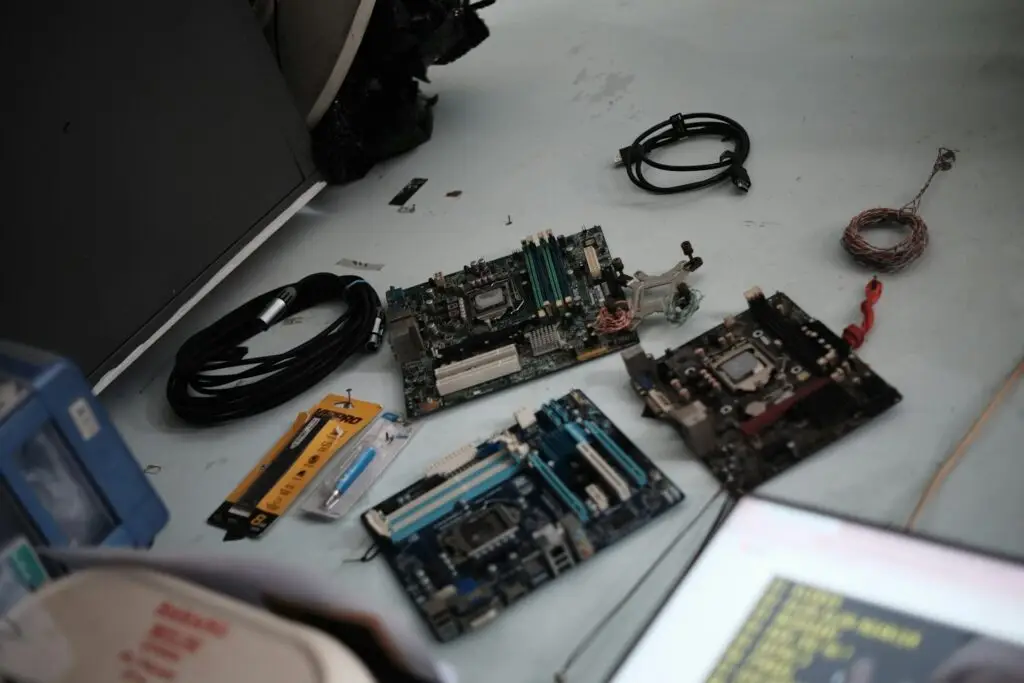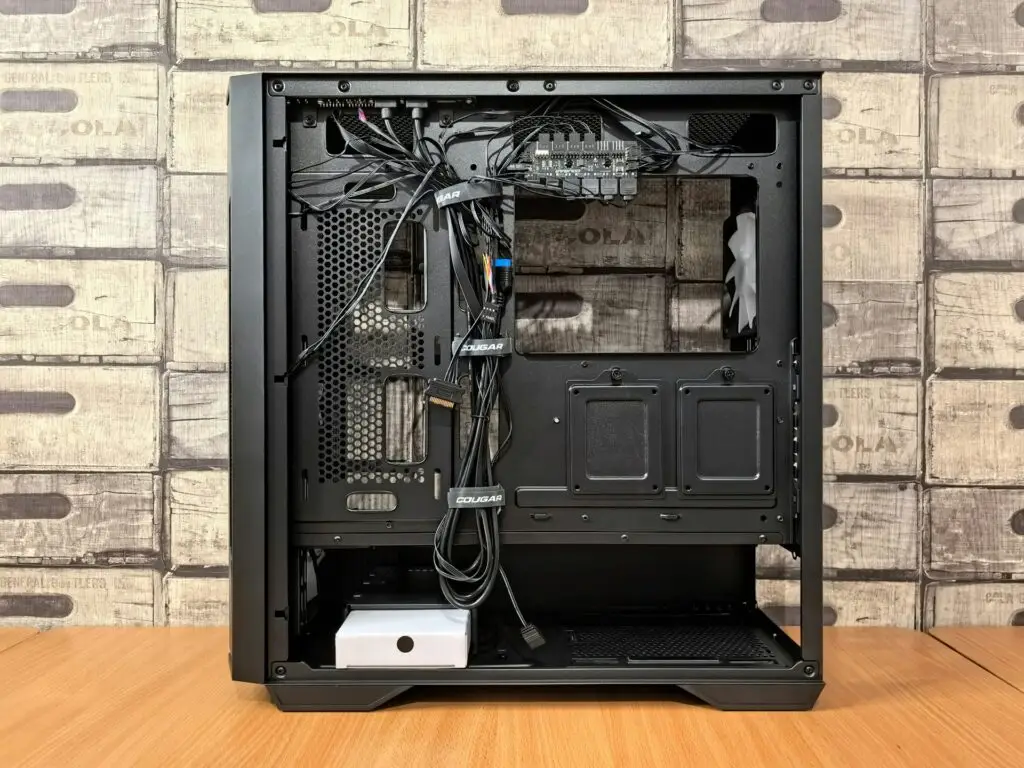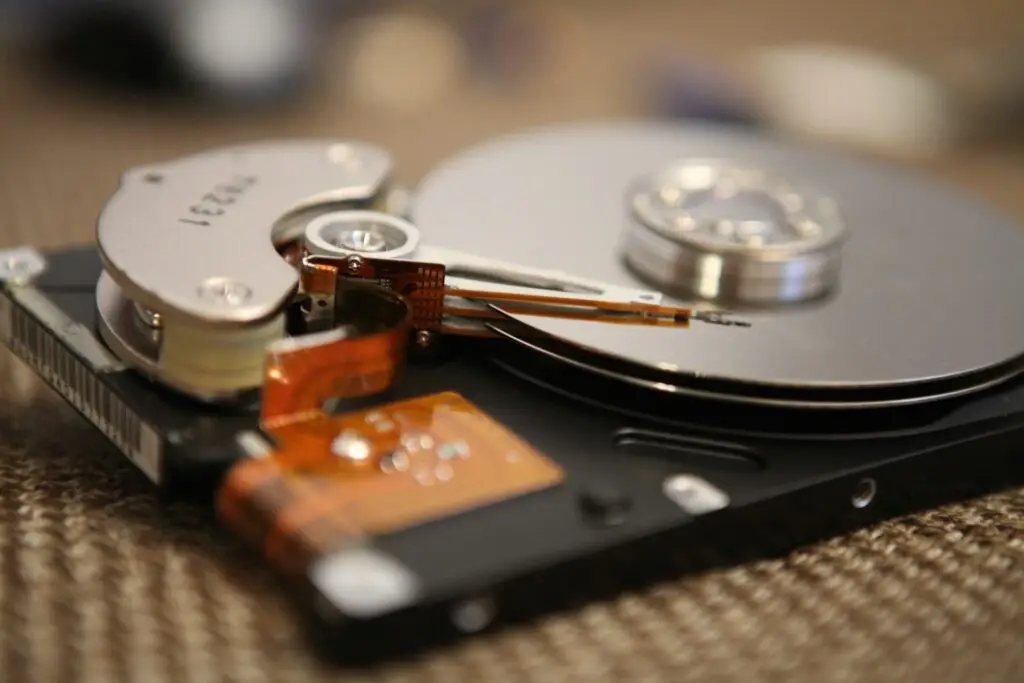Electronic devices have become an important part of our lives. From smartphones to computers, these gadgets keep us connected and productive. But what happens when these devices reach the end of their life? Many people don’t realize the extensive journey their old electronics go through once they are recycled.
Recycling electronics is a detailed process that includes several steps, from collection to creating new products from recovered materials. Each step is crucial in making sure that valuable resources are reused and harmful substances are kept out of landfills. This journey of recycling not only helps the environment but also conserves energy and resources.
Understanding how recycled electronics are managed can make us more aware of the importance of proper e-waste disposal. By following the journey of recycled electronics, we can appreciate the effort and technology involved in turning old gadgets into something useful again. Let’s take a closer look at how this process works and the benefits it brings.
Collection and Transportation of E-Waste
The journey of recycled electronics begins with the collection and transportation of e-waste. Collection points can be community drop-off locations, special e-waste recycling events, or designated bins at electronic stores. These locations make it convenient for people to drop off their old devices instead of throwing them in the trash.
Once collected, the e-waste is transported to recycling facilities. Transporting e-waste requires careful handling to prevent damage and ensure safety. These electronic items contain sensitive materials, so they must be secured properly during transit. Special trucks designed for e-waste transport often provide secure and efficient transport to the recycling centers.
Facilities that specialize in e-waste recycling follow strict regulations to make sure the e-waste does not harm the environment during transportation. It is crucial that e-waste is transported quickly to minimize the risk of contamination. The first step ensures that the electronics are safely on their way to being recycled and transformed into something new.
Sorting and Dismantling Electronic Devices
Once the e-waste arrives at the recycling facility, the next step is sorting and dismantling the electronic devices. Sorting involves separating the different types of electronics, such as computers, phones, and televisions. This process helps streamline the recycling process since different devices require different methods of handling and processing.
After sorting, the devices are dismantled. Skilled workers disassemble the electronics to separate their components. This process involves removing the outer shells and extracting valuable parts like circuit boards, batteries, plastics, and metals. Dismantling is done carefully to avoid damaging any useful components and to prevent the release of hazardous substances.
The dismantled parts are further sorted into categories based on the material type. For example, metals like copper and aluminum are put into separate bins, and plastic parts are collected in another. This careful sorting process ensures that each material can be processed efficiently and safely. By breaking down the devices into their individual components, recyclers can maximize the amount of material recovered.
Material Recovery and Processing
After dismantling, the next step is material recovery and processing. This stage involves extracting valuable materials from the separated components. Metals such as gold, silver, copper, and aluminum are recovered through various processes like shredding, melting, and smelting. These processes break down the materials into their raw forms for reuse.
Plastics and glass undergo different treatments. Plastics are sorted by type and then cleaned and melted down to create new plastic products. Glass from screens and other parts is crushed and cleaned to remove any hazardous coatings. This clean glass can then be used to create new glass products or added to construction materials.
Recyclers also handle hazardous materials carefully. Substances like lead, mercury, and cadmium are safely removed and disposed of following environmental regulations. This ensures that these toxic materials do not end up polluting the environment. The recovered materials are then sold to manufacturers who use them to create new products, closing the loop of the recycling process.
The Role of Recycled Materials in New Products
The final stage in the journey of recycled electronics is the creation of new products. The materials recovered and processed from e-waste play a crucial role in manufacturing. Using recycled materials reduces the need to mine and refine new raw materials, which conserves natural resources and energy.
Manufacturers incorporate these recycled materials into various products. Recycled metals are used in new electronics, vehicles, and construction. Recycled plastics find their way into items like new gadgets, packaging, and household products. Even glass from old screens is used in new screens, building materials, and decorative items.
Creating products from recycled materials helps promote a circular economy. This means materials are continuously reused, reducing waste and minimizing environmental impact. It highlights how our old electronics can find new life in different forms, preventing valuable materials from ending up in landfills.
Conclusion
Recycling electronics is a vital process that transforms old gadgets into valuable resources. The journey from collection to creating new products involves careful handling, skilled labor, and innovative technology. Each step, from collecting and transporting e-waste to sorting, dismantling, and material recovery, plays an important role in protecting our environment.
By understanding this journey, we become more aware of the importance of proper e-waste disposal. Recycling not only conserves resources but also supports sustainable manufacturing practices. It demonstrates how each of us can contribute to a cleaner, greener planet by recycling our old electronics.
Take the next step in responsible e-waste disposal in Sacramento and beyond by partnering with ReWorx Recycling. We offer environmentally friendly solutions for your electronic disposal needs. Contact ReWorx Recycling today and make a positive impact on our planet.
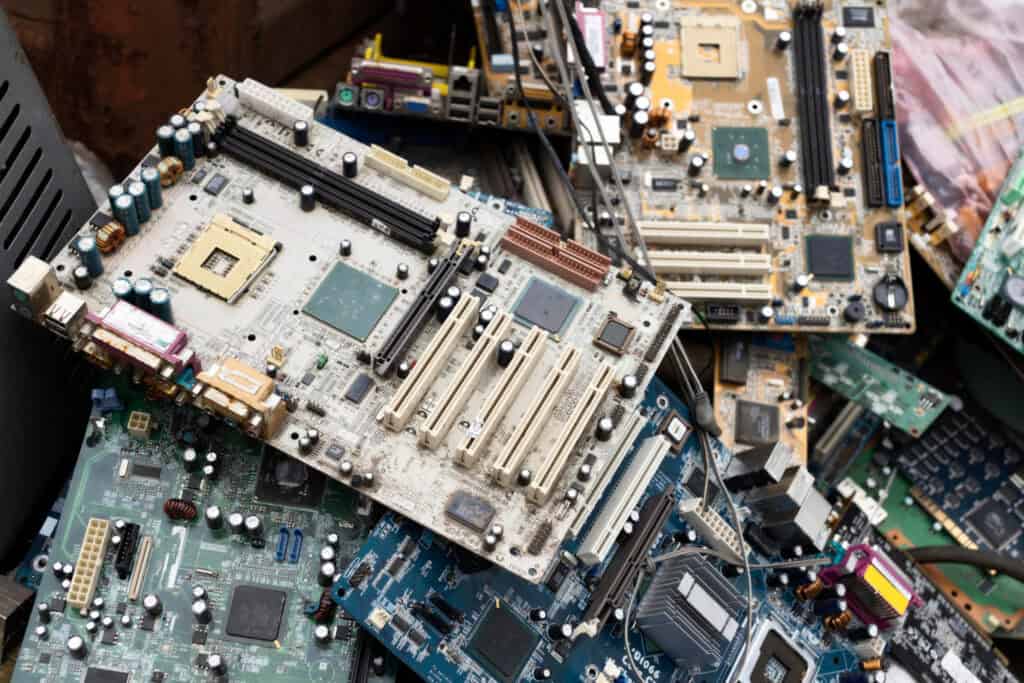
Hey there, Atlanta techies! We know you love your gadgets, but what happens when it’s time to upgrade? Don’t let those old devices end up in a landfill! Reworx Recycling is here to help you recycle your electronics responsibly and make a positive impact on the environment. Let’s explore the world of e-waste and discover how you can make a difference.
Electronic devices have become an important part of our lives. From smartphones to computers, these gadgets keep us connected and productive. But what happens when these devices reach the end of their life? Many people don’t realize the extensive journey their old electronics go through once they are recycled.
Recycling electronics is a detailed process that includes several steps, from collection to creating new products from recovered materials. Each step is crucial in making sure that valuable resources are reused and harmful substances are kept out of landfills. This journey of recycling not only helps the environment but also conserves energy and resources.
Understanding how recycled electronics are managed can make us more aware of the importance of proper e-waste disposal. By following the journey of recycled electronics, we can appreciate the effort and technology involved in turning old gadgets into something useful again. Let’s take a closer look at how this process works and the benefits it brings.
Collection and Transportation of E-Waste
The journey of recycled electronics begins with the collection and transportation of e-waste. Collection points can be community drop-off locations, special e-waste recycling events, or designated bins at electronic stores. These locations make it convenient for people to drop off their old devices instead of throwing them in the trash.
Once collected, the e-waste is transported to recycling facilities. Transporting e-waste requires careful handling to prevent damage and ensure safety. These electronic items contain sensitive materials, so they must be secured properly during transit. Special trucks designed for e-waste transport often provide secure and efficient transport to the recycling centers.
Facilities that specialize in e-waste recycling follow strict regulations to make sure the e-waste does not harm the environment during transportation. It is crucial that e-waste is transported quickly to minimize the risk of contamination. The first step ensures that the electronics are safely on their way to being recycled and transformed into something new.
Sorting and Dismantling Electronic Devices
Once the e-waste arrives at the recycling facility, the next step is sorting and dismantling the electronic devices. Sorting involves separating the different types of electronics, such as computers, phones, and televisions. This process helps streamline the recycling process since different devices require different methods of handling and processing.
After sorting, the devices are dismantled. Skilled workers disassemble the electronics to separate their components. This process involves removing the outer shells and extracting valuable parts like circuit boards, batteries, plastics, and metals. Dismantling is done carefully to avoid damaging any useful components and to prevent the release of hazardous substances.
The dismantled parts are further sorted into categories based on the material type. For example, metals like copper and aluminum are put into separate bins, and plastic parts are collected in another. This careful sorting process ensures that each material can be processed efficiently and safely. By breaking down the devices into their individual components, recyclers can maximize the amount of material recovered.
Material Recovery and Processing
After dismantling, the next step is material recovery and processing. This stage involves extracting valuable materials from the separated components. Metals such as gold, silver, copper, and aluminum are recovered through various processes like shredding, melting, and smelting. These processes break down the materials into their raw forms for reuse.
Plastics and glass undergo different treatments. Plastics are sorted by type and then cleaned and melted down to create new plastic products. Glass from screens and other parts is crushed and cleaned to remove any hazardous coatings. This clean glass can then be used to create new glass products or added to construction materials.
Recyclers also handle hazardous materials carefully. Substances like lead, mercury, and cadmium are safely removed and disposed of following environmental regulations. This ensures that these toxic materials do not end up polluting the environment. The recovered materials are then sold to manufacturers who use them to create new products, closing the loop of the recycling process.
The Role of Recycled Materials in New Products
The final stage in the journey of recycled electronics is the creation of new products. The materials recovered and processed from e-waste play a crucial role in manufacturing. Using recycled materials reduces the need to mine and refine new raw materials, which conserves natural resources and energy.
Manufacturers incorporate these recycled materials into various products. Recycled metals are used in new electronics, vehicles, and construction. Recycled plastics find their way into items like new gadgets, packaging, and household products. Even glass from old screens is used in new screens, building materials, and decorative items.
Creating products from recycled materials helps promote a circular economy. This means materials are continuously reused, reducing waste and minimizing environmental impact. It highlights how our old electronics can find new life in different forms, preventing valuable materials from ending up in landfills.
Conclusion
Recycling electronics is a vital process that transforms old gadgets into valuable resources. The journey from collection to creating new products involves careful handling, skilled labor, and innovative technology. Each step, from collecting and transporting e-waste to sorting, dismantling, and material recovery, plays an important role in protecting our environment.
By understanding this journey, we become more aware of the importance of proper e-waste disposal. Recycling not only conserves resources but also supports sustainable manufacturing practices. It demonstrates how each of us can contribute to a cleaner, greener planet by recycling our old electronics.
Take the next step in responsible e-waste disposal in Sacramento and beyond by partnering with ReWorx Recycling. We offer environmentally friendly solutions for your electronic disposal needs. Contact ReWorx Recycling today and make a positive impact on our planet.


